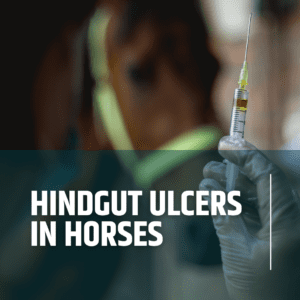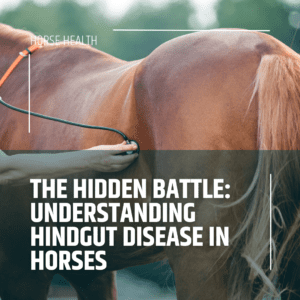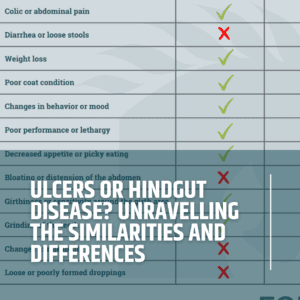
Ben Nedas
Chief Commercial Officer
Spring Fever in Horses: Understanding and Managing Seasonal Changes
01
Introduction
Spring brings a mix of warm and cold days, often sprinkled with rain, lengthening the days and allowing more time for equestrian activities. However, this season can also introduce certain challenges, notably the phenomenon known as 'spring fever' in horses. Characterised by increased sprightliness, reactive, and anxious behaviours, this condition can make riding and handling horses more difficult, potentially affecting the confidence of horse owners and riders. This blog explores the underlying causes of spring fever in horses and offers strategies to manage these seasonal changes effectively.
02
Understanding Spring Fever
Spring fever in horses is primarily linked to the rapid growth and consumption of spring grass. As the first shoots of spring grass emerge, often before they're visibly noticeable, horses tend to consume it eagerly. This can lead to a decrease in hay consumption, alterations in the consistency and colour of droppings, and the appearance of 'gassy bellies'. Spring grass is particularly appealing to horses due to its high sugar content, which provides a significant energy boost. This increase in energy intake can lead to the exuberant behaviour often referred to as 'spring fever'.
03
The Role of Diet
The lushness of spring grass brings with it high levels of carbohydrates (sugars and starches), which can lead to weight gain and over-excitability in horses. Additionally, spring grass is often low in magnesium, a vital mineral for maintaining focus and calmness in horses. The rapid growth of grass in spring also results in a decrease in fibre content, essential for daily digestive and equine health, potentially leading to nutrient deficiencies if not balanced with a proper diet.
04
Magnesium Deficiency and Spring Fever
A significant factor contributing to the anxious and nervous behaviour observed during spring is the competition between potassium and magnesium absorption in the horse's digestive system. The high potassium levels in rapidly growing spring grass can hinder magnesium uptake, leading to symptoms of magnesium deficiency such as increased anxiety and nervousness. This condition, often exacerbated by the rich potassium content of spring grass, necessitates careful management of the horse's diet to ensure adequate magnesium levels.
Additional important advice: too much magnesium is linked to reports of spooky behaviour, so use caution and be prepared to feed supplemental magnesium only when necessary.
05
Management Strategies
To mitigate the effects of spring fever and ensure the well-being of horses during this transitional season, consider the following management strategies:
1. Diet Adjustment
Gradually introduce spring grass to your horse's diet while continuing to offer hay. Consider the nutritional content of the grazing grass, which is more nutritious in spring, and adjust feed levels accordingly. If necessary, restrict grass intake to manage energy levels.
2. Add EquiNectar
Our studies show that horses using EquiNectar adapt better to changes in the grass and show more resilient gut microbiomes.
Extensive customer feedback demonstrates that horses feel better and are in better moods!
3. Establish Ground Manners
Spend time handling your horse from the ground before riding to reinforce manners and focus their attention on you. This helps strengthen your relationship and can improve behaviour when riding.
4. Vary Riding Routines
Keep your riding program diverse to prevent boredom and misbehaviour. Changing routines and incorporating different activities can help maintain your horse's concentration and reduce the likelihood of undesirable behaviours.
5. Pre-Ride Preparation
If needed, lunge or long-rein your horse before riding to allow them to expend excess energy, reducing the chance of exuberant behaviour during the ride.
6. Wise Timing
Consider riding in the afternoon after your horse has spent the morning in the field, especially if they are stabled at night. This timing allows them to burn off some energy before training sessions.
7. Professional Assistance
If difficulties persist, seek help from a specialist or instructor who can offer strategies for safely managing your horse's behaviour and adapting your approach to suit both your and your horse.
06
Is EquiNectar Useful for My Horse?
In the context of managing spring fever, EquiNectar can be a valuable addition to your horse's diet. By providing essential digestive enzymes, EquiNectar supports the efficient breakdown of starches and fructans in the small intestine. This reduces the likelihood of undigested sugars reaching the hindgut and negatively impacting the gut microbiome.
Moreover, EquiNectar's role in optimising the hindgut microbiome can contribute to overall digestive health, potentially mitigating some of the dietary challenges associated with the consumption of lush spring grass.
07
Conclusion
Spring fever in horses, while challenging, can be managed effectively through careful dietary management, behaviour reinforcement, and thoughtful riding practices. By understanding the nutritional dynamics of spring grass and its impact on horse behaviour, owners and riders can take proactive steps to ensure their horses remain healthy, focused, and well-behaved during this vibrant season.
08
Read more
To learn more about the challenges of spring and sugar-rich grass:
Why does grass make my horse irritable?
Spring's Green Peril: Navigating the Risks of Lush Grass and Colic in Horses
ABOUT EQUINECTAR
Description
EquiNectar® is a natural feed supplement, that is scientifically proven to:
- Re-balance your horse’s gut bacteria
- Help your horse maximise benefits from its feed
- Improve your horse’s condition
More information
EquiNectar® is produced by Tharos Ltd in the UK. It is a natural source of digestive enzymes and contains only the following ingredients:
- Our patented enzyme rich malt extract
- Medium chain triglycerides (from coconut oil)
- Potassium sorbate
For more details of the enzymes within EquiNectar® take a look at the ingredients and enzymes page.
How to feed
Simply add EquiNectar® to your horse's daily feed, using the Feeding Rate chart to determine the correct amount.
For detailed instructions about how to introduce EquiNectar, please read the comprehensive Feeding Guide page.





